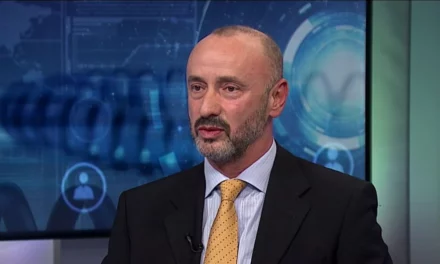So far, about seven of the shipments from Ukraine have reached Spain alone. According to the Russian-Ukrainian agreement concluded at the end of July, the several million tons of Ukrainian grain stuck there can be transported from the Black Sea ports since the beginning of August. According to the UN, the step was particularly important from the point of view of poor countries, since the stuck crops would have endangered the food supply of the more backward areas, reports V4NA.
In recent days, Vladimir Putin has repeatedly put forward the possibility of revising the agreement. According to the Russian president, most shipments arrive in the rich countries of the European Union. We looked at the data of the center coordinating the deliveries: they show that ships left for Spain and Italy much more often than for Egypt, Iran, or India. But also in terms of the quantity delivered, a lot reached the continent. For example, 15 percent of shipments go to Spain.
On July 22, Russia and Ukraine signed an agreement . According to the agreement brokered by Turkey and the UN, Russia guarantees the safety of grain-carrying ships from the Black Sea ports, which have been under Russian blockade since the beginning of the war, and thus were able to start exporting the twenty million tons of grain that had been languishing there for months. By the way, according to the agreement, the Western countries also moderated the sanctions imposed on the export of Russian grain.
After the agreement, half the world was relieved, as the step was extremely important from the point of view of preventing a global food crisis, which, according to the UN, could have primarily affected poor countries. Ukraine is one of the world's largest exporters of grain, providing for example about ten percent of the global wheat supply, and the two warring parties together account for nearly a third of the global import demand. The vast majority of Ukrainian grain leaves the country from the Ukrainian port cities on the Black Sea, such as Odesa, Chornomorsk or Pivdennyi, which is why the conclusion of the four-month agreement concluded in Istanbul was crucial.
After the signing of the agreement, the deliveries started, the first ship left the port of Odessa on August 1 with more than 26 thousand tons of corn on board. Since then, the deliveries have been uninterrupted.
At the same time, Vladimir Putin has repeatedly put the prospect of revising the agreement in recent days. According to the Russian president, grain shipments from Ukraine are not going to the so-called poor countries as originally intended, but to the rich countries of the European Union. Putin about this at the Eastern Economic Forum in Vladivostok on September 7, but he also brought the situation to the attention of UN Secretary-General António Guterres during their telephone conversation
According to the data of the Joint Coordination Center (JCC) in Istanbul, which manages Ukrainian grain exports, 136 ships transported more than three million tons of grain and other food from Ukrainian ports until September 14.

If we examine the data carefully, it can be seen that most of the ships left for Turkey, and 55 of the 136 started shipments ended up there. Most of the grain that arrives here is re-exported, for example to Africa and the Middle East. At the same time, an examination of the data shows that a significant amount of grain reached EU countries as well.
The second shipment - which left Odessa on August 5 - immediately went to Ireland with 33 thousand tons of corn on board. Also on this day, the third shipment in a row headed for Italy with a load of around thirteen thousand tons. But according to the center's records, the shipment started:
- to Germany (58,000 tons of corn on August 25),
- to France twice (more than fourteen thousand tons on August 27, and seven thousand tons of rapeseed on September 2),
- Six times to the Netherlands (between August 17 and September 11, 18,500 tons of sunflower meal, as well as more than one hundred thousand tons of rapeseed and the same amount of corn)
- Also to Greece six times (between August 22 and September 11, more than twenty-one thousand tons of corn, about 6,100 tons of wheat and 4,400 tons of barley)
- to Spain seventeen times,
- And to Italy eighteen times.
Spain and Italy received many more shipments, such as Iran (a total of two shipments), India (a total of four shipments) or Egypt (a total of ten shipments). If we look at the quantity delivered in the case of these countries, it can be seen that India and Iran received almost the same amount of grain (125,600 tons to India, 126,234 tons to Iran), and more than two hundred and thirty thousand tons to Italy. The amount delivered to Egypt exceeded two hundred and seventy thousand tons, and the amount delivered to Spain exceeded four hundred and eighty thousand tons. In other words, in the period between August 3 and September 14, only about fifteen percent of the amount of grain launched from Ukraine reached the Spanish ports.
wrote on September 7 that 30 percent of the cargoes went to low- and middle-income countries. At the same time, it was also highlighted that about thirty-six percent of the grain delivered up to that point went to European countries. The same rate for African states was 17 percent at the time. Just one interesting thing: after September 7, more ships left for Spain and Italy than before. 11 shipments to Spanish ports and 10 to Italian ports started after September 7.
Featured Image: Pixabay













